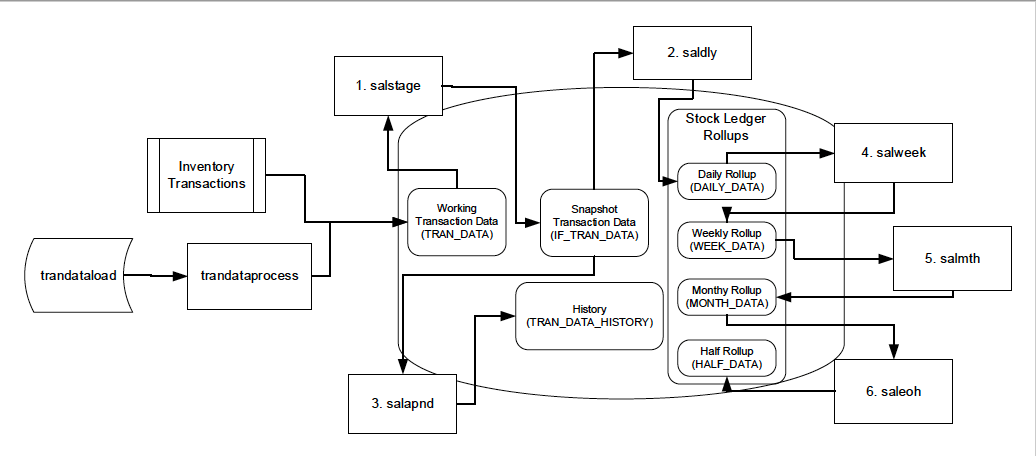17 Stock Ledger
The stock ledger holds financial data that allows you to monitor your company's performance. It incorporates financial transactions related to merchandising activities, including sales, purchases, transfers, and markdowns; and is calculated weekly or monthly. The stock ledger accounts for inventory in buckets (how much inventory was returned, how much damaged, and so on). For additional information about stock ledger, including configuration and calculations, see the Merchandising Documentation Library (Doc ID: 1585843.1).
Figure 17-1 Process Flow - Stock Ledger

Different Merchandising transactions, such as sales, receipts, and adjustments, write to the working transaction data table (TRAN_DATA). Additionally, transactions can be uploaded from an external source using the External Transaction Data Upload (trandataload), which are then loaded using trandataprocess. This is the starting point for the batch processes shown above.
-
Stage Stock Ledger Transactions for Additional Processing (salstage) moves transaction data from the working table to the snapshot transaction data table for additional processing.
-
Daily Rollup of Transaction Data for Stock Ledger (saldly) rolls up the snapshot transaction data and persists it to the daily rollup table.
-
Append Stock Ledger Information to History Tables (salapnd) moves data from the snapshot transaction data table to the history table.
-
Weekly Rollup of Data/Calculations for Stock Ledger (salweek) rolls up daily stock ledger data to weekly stock ledger data.
-
Monthly Rollup of Data/Calculations for Stock Ledger (salmth) rolls up weekly stock ledger data to monthly stock ledger data.
-
End Of Half Rollup of Data/Calculations for Stock Ledger (saleoh) rolls up monthly stock ledger data to half level stock ledger data.
There are other programs in this section as well related to removing old records and capturing additional details for specific accounting requirements. For details on the trandataload upload, see Merchandising Operations Guide Volume 2.